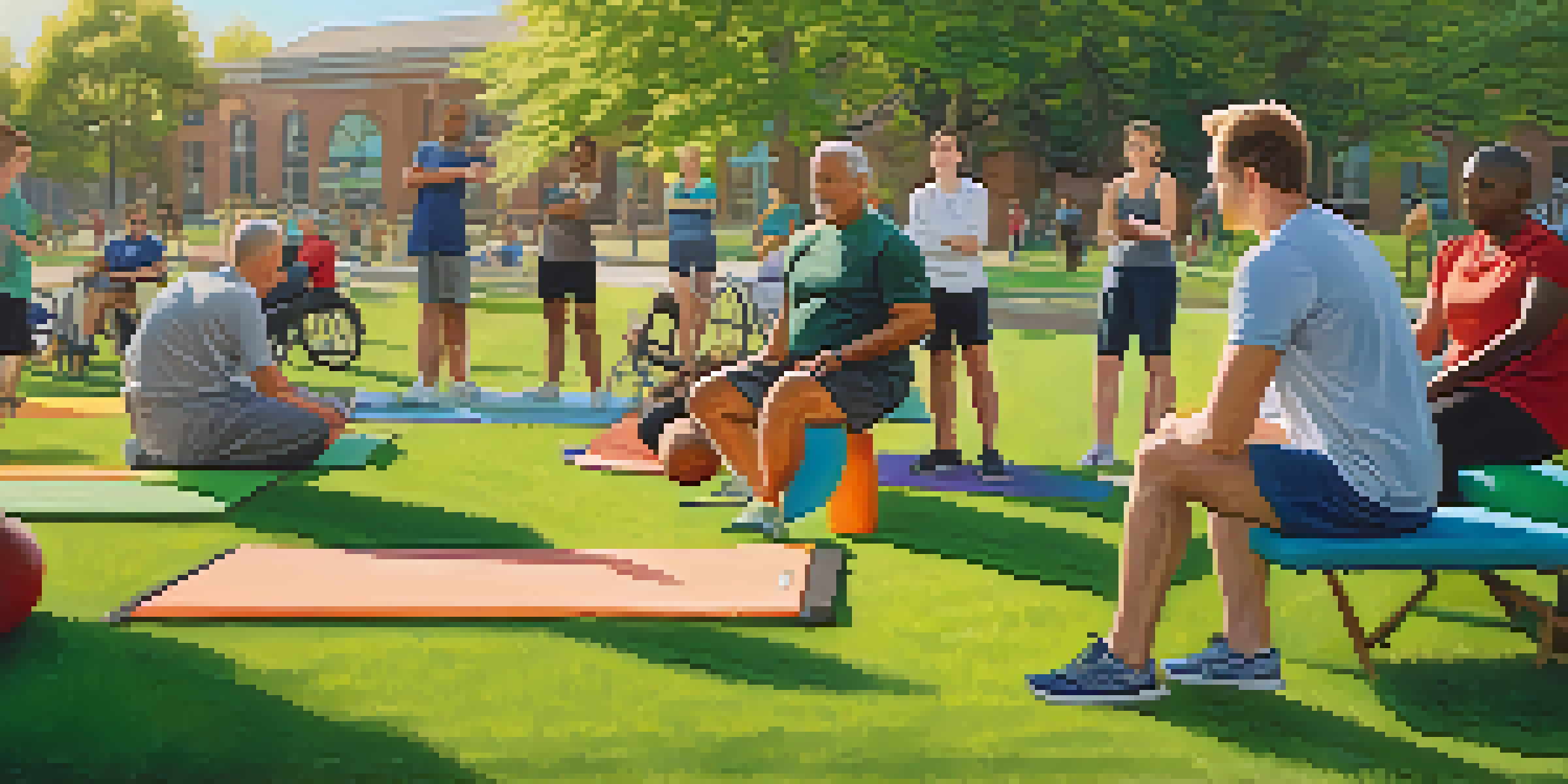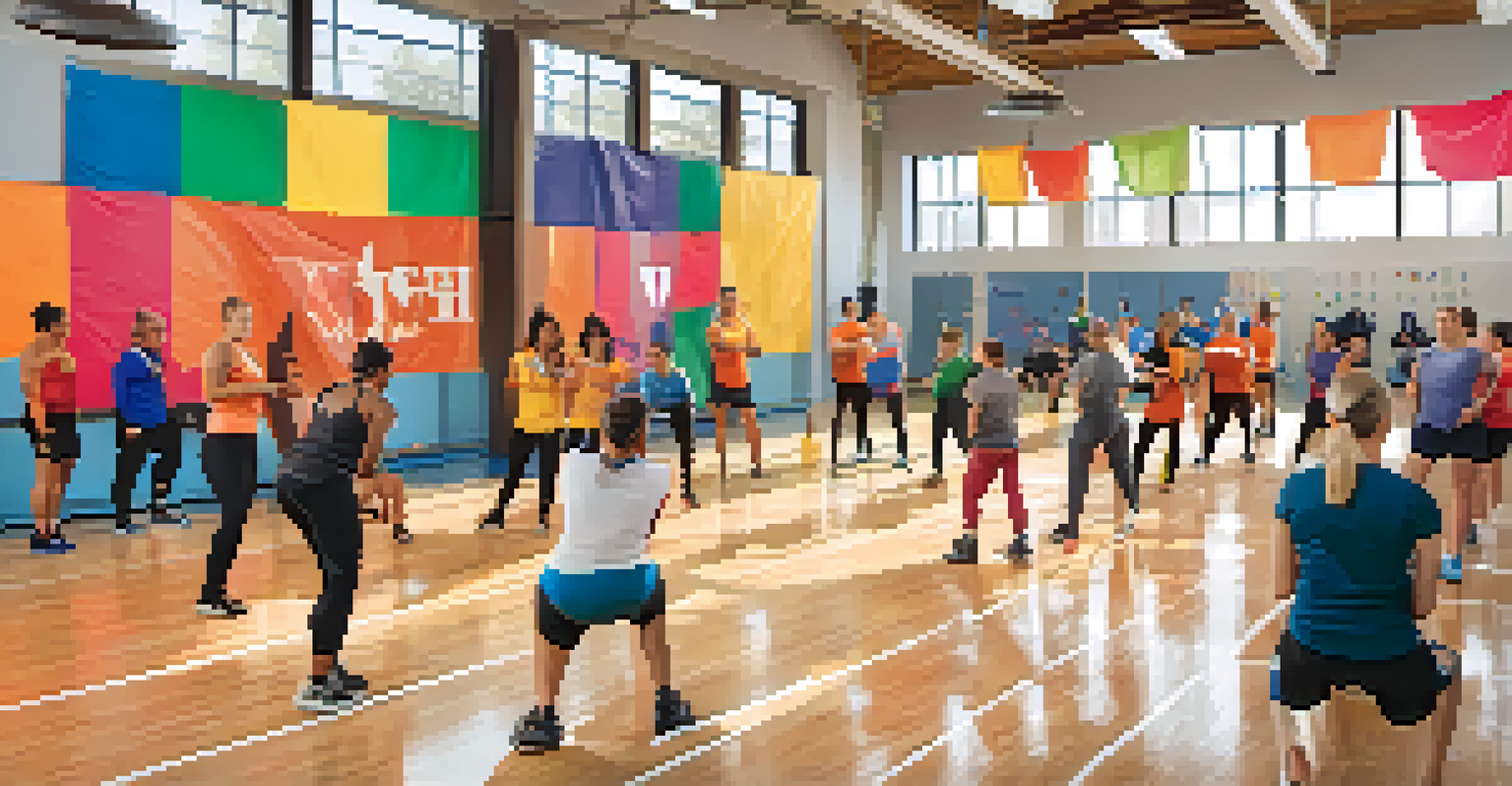The Role of Community Resources in Sports Injury Recovery

Understanding the Importance of Community Resources
Community resources play a pivotal role in the recovery process for sports injuries. They encompass a wide range of services, from physical therapy clinics to support groups. These resources not only provide essential medical care but also foster a sense of belonging and encouragement during recovery.
Alone, we can do so little; together, we can do so much.
For athletes, being part of a supportive community can lead to better emotional and psychological outcomes. It’s not just about healing physically; the mental aspect of recovery is equally important. Engaging with others who have faced similar challenges can motivate athletes to stay committed to their rehabilitation.
Moreover, community resources often offer tailored programs that cater specifically to the needs of injured athletes. This personalized approach can significantly enhance the recovery experience, making it easier for athletes to regain their strength and confidence.
Access to Physical Therapy and Rehabilitation Services
Physical therapy is often the cornerstone of recovery from sports injuries, and community resources provide essential access to these services. Local clinics may offer specialized rehabilitation programs designed for specific types of injuries, ensuring athletes receive targeted care. This can greatly accelerate the healing process and reduce the risk of re-injury.

Additionally, many community centers offer affordable or even free physical therapy sessions, making recovery accessible to everyone, regardless of financial status. This inclusivity is crucial, as it allows athletes to prioritize their health without added financial stress.
Community Resources Aid Recovery
Community resources, including physical therapy and support groups, play a vital role in helping athletes recover from sports injuries both physically and emotionally.
Furthermore, therapists often work collaboratively with local sports teams, sharing valuable insights that can help prevent injuries in the future. This connection not only aids recovery but also enhances overall community health.
The Role of Support Groups in Recovery
Support groups are another vital community resource that can aid in sports injury recovery. These groups provide a safe space for athletes to share their experiences, challenges, and triumphs. The emotional support found in these settings can be incredibly powerful, helping individuals cope with the frustration and isolation that often accompany injuries.
The greatest glory in living lies not in never falling, but in rising every time we fall.
Hearing stories from others who have successfully navigated their recovery journey can inspire hope and resilience. It reminds athletes that they are not alone in their struggles, creating a sense of camaraderie that can be uplifting and motivating.
Moreover, support groups often host workshops and discussions that focus on coping strategies, injury prevention, and mental health. Such resources can equip athletes with the tools they need to not only recover but also thrive in their sport after injury.
Educational Workshops and Injury Prevention Programs
Community resources often extend beyond recovery to include educational workshops on injury prevention. These programs can teach athletes about proper techniques, warm-up routines, and the importance of listening to their bodies. By equipping athletes with knowledge, they can reduce the likelihood of future injuries.
Many local gyms and community centers host these workshops, making them easily accessible to athletes of all levels. This proactive approach not only benefits individual athletes but also enhances the overall safety of the sports community.
Support Groups Foster Emotional Health
Support groups provide a safe space for athletes to share their experiences, fostering camaraderie and emotional resilience during recovery.
Furthermore, these educational initiatives often foster a culture of awareness and responsibility among athletes. When everyone is informed about injury prevention, it creates a stronger, more supportive environment for all participants.
The Impact of Local Athletic Programs and Clubs
Local athletic programs and clubs are crucial community resources that can support injured athletes during recovery. These organizations often provide structured environments that encourage participation, even for those who may not be able to compete at their previous level. This can help maintain an athlete's sense of identity and connection to their sport.
Additionally, many clubs offer adaptive sports programs that allow injured athletes to engage in modified versions of their favorite activities. These adaptations can help maintain fitness levels and boost morale during recovery.
Being involved in a local club also fosters social interactions, which are important for emotional well-being. The friendships formed in these settings can provide additional motivation and support as athletes work toward their recovery goals.
Access to Nutrition and Wellness Resources
Nutrition plays a critical role in the recovery process, and community resources often include access to nutritionists and wellness programs. Proper nutrition can accelerate healing and improve overall health, making it an essential aspect of recovery. Community centers may offer workshops or consultations that help athletes understand the best dietary choices for their specific injuries.
Moreover, many local organizations partner with health professionals to provide resources that promote overall wellness. This holistic approach ensures that athletes not only focus on physical recovery but also on their nutritional and mental health.
Education Enhances Injury Prevention
Educational workshops on injury prevention empower athletes with knowledge and techniques that help reduce the risk of future injuries.
These community-driven nutrition initiatives empower athletes to take charge of their recovery. By understanding the impact of their diet on healing, they can make informed choices that lead to better outcomes.
The Role of Community in Mental Health Support
Mental health is a crucial component of recovery from sports injuries, and community resources can provide essential support in this area. Many local organizations offer counseling services, workshops, or even group therapy sessions specifically tailored for athletes. These resources can help individuals navigate the emotional challenges that often accompany an injury, such as anxiety and depression.
In addition, community events focused on mental wellness can encourage athletes to prioritize their mental health. Connecting with others who share similar experiences can create a sense of belonging and reduce feelings of isolation.

By fostering an environment that values mental well-being, communities can play a significant role in helping athletes recover holistically, addressing both physical and psychological aspects of healing.
Building a Stronger Community Through Recovery
Ultimately, the role of community resources in sports injury recovery extends beyond individual athletes. When communities come together to support their injured members, they build a stronger, more resilient environment for everyone. This collective effort can lead to improved overall health and well-being across the community.
By sharing resources, experiences, and knowledge, communities can create a culture of support that empowers athletes to thrive. This interconnectedness fosters not just recovery but also a greater appreciation for the importance of health and wellness.
As we recognize the value of community in the recovery process, it becomes clear that these resources are not just helpful; they are essential. Together, we can ensure that every athlete has the support they need to recover and return to their sport with renewed strength and passion.